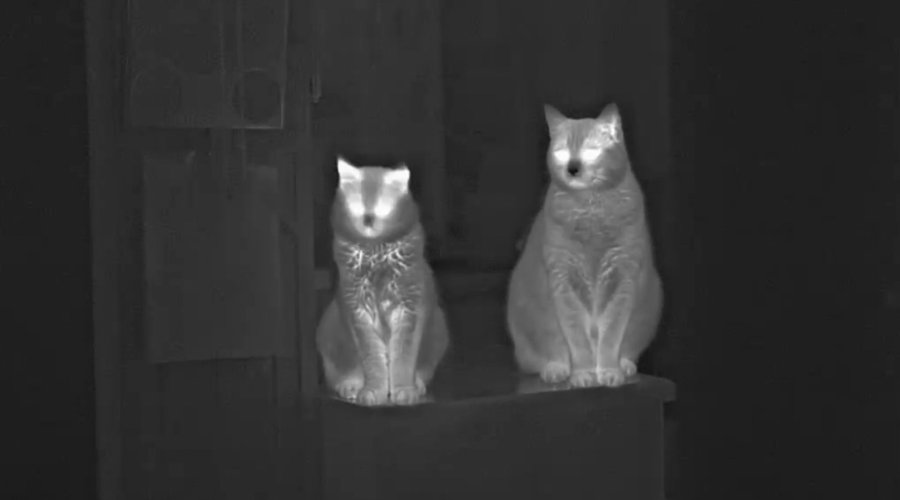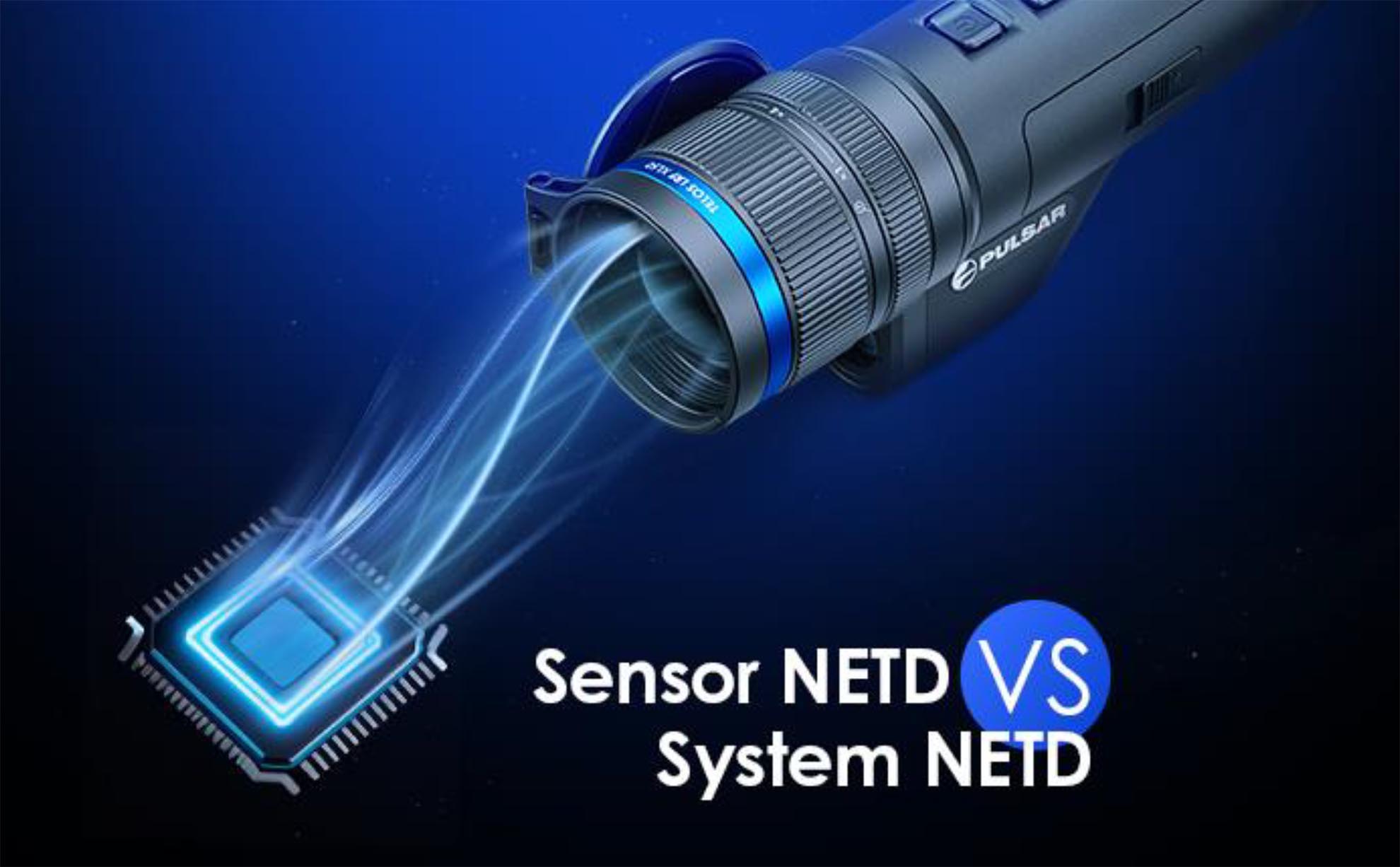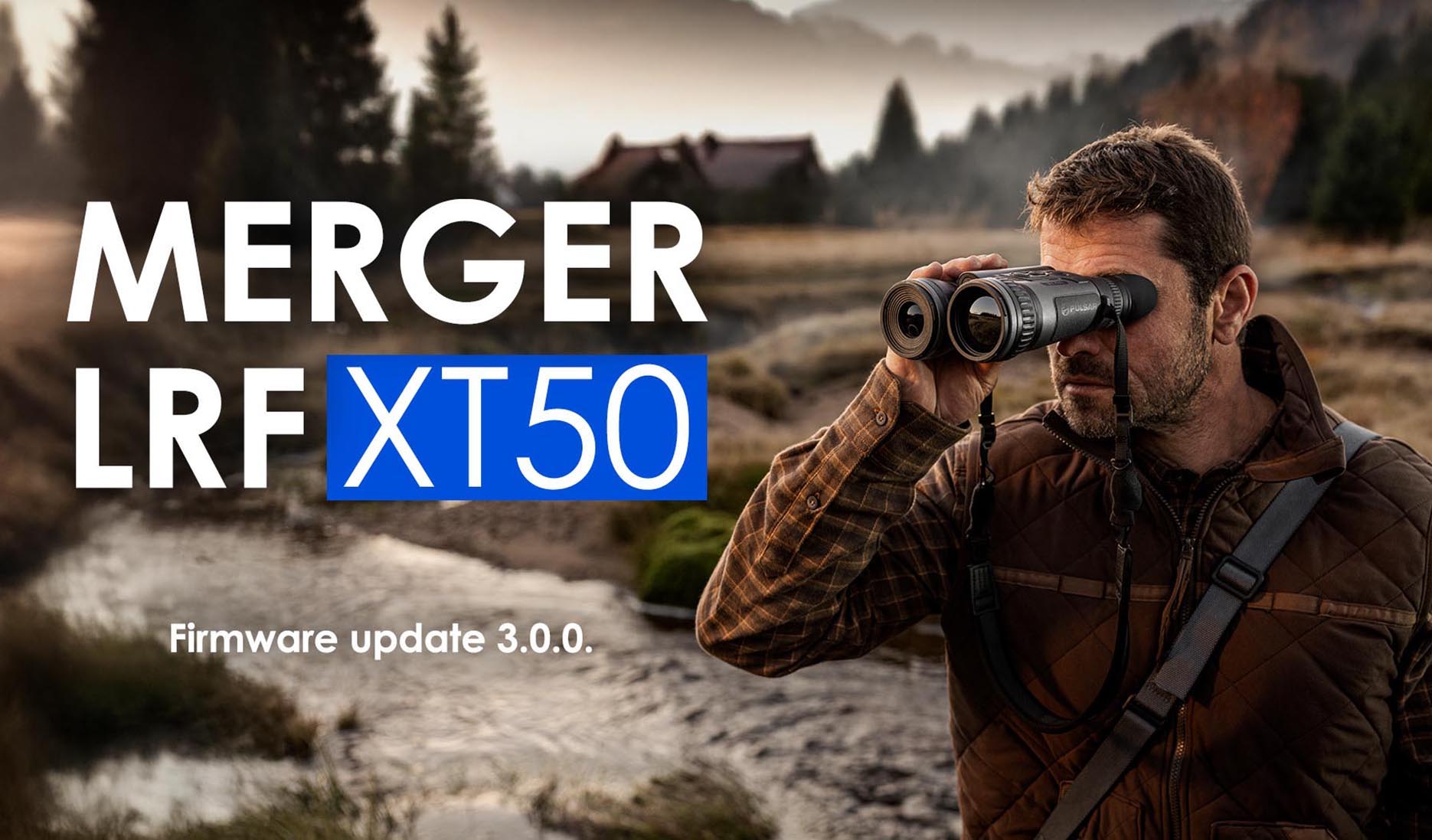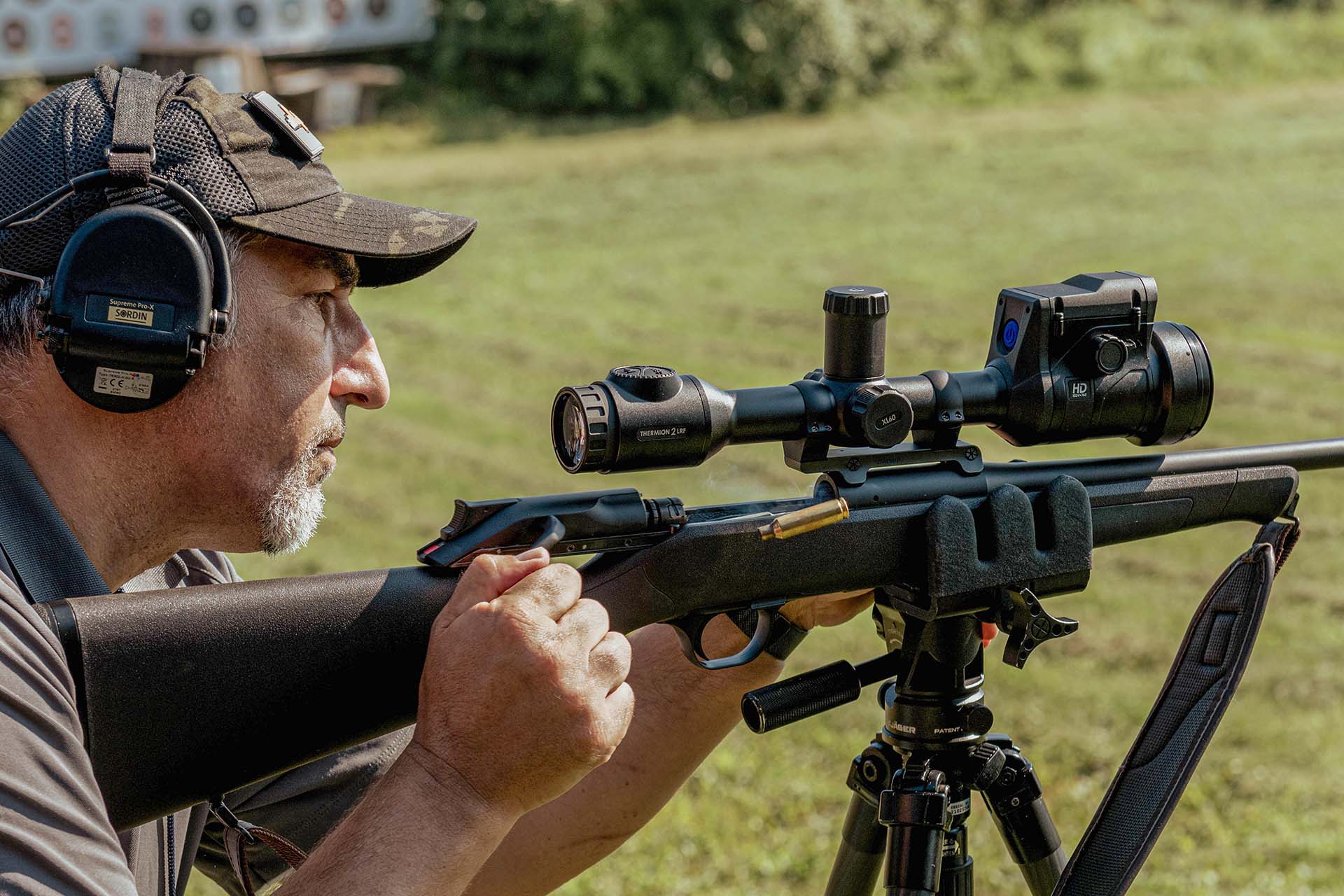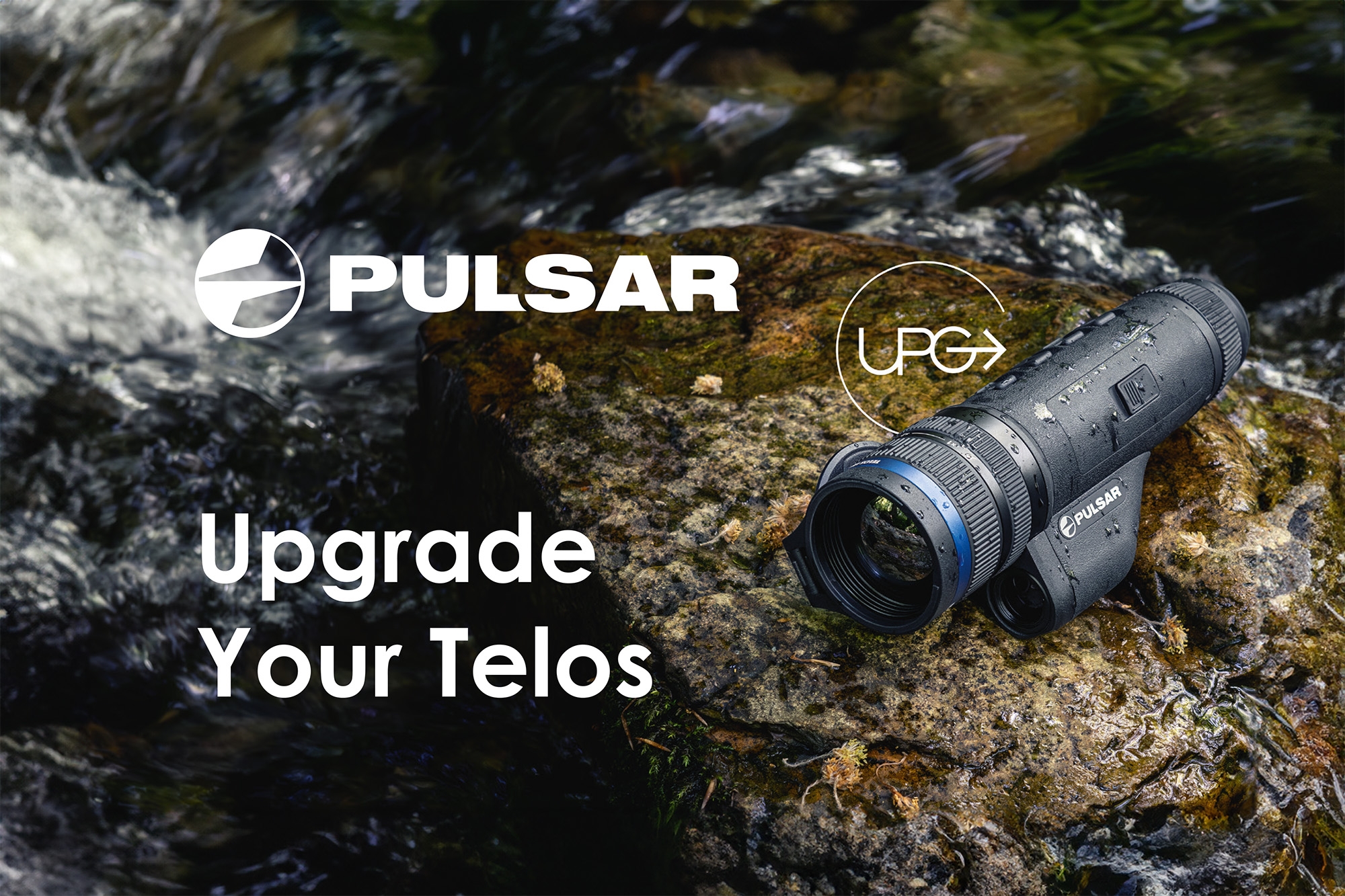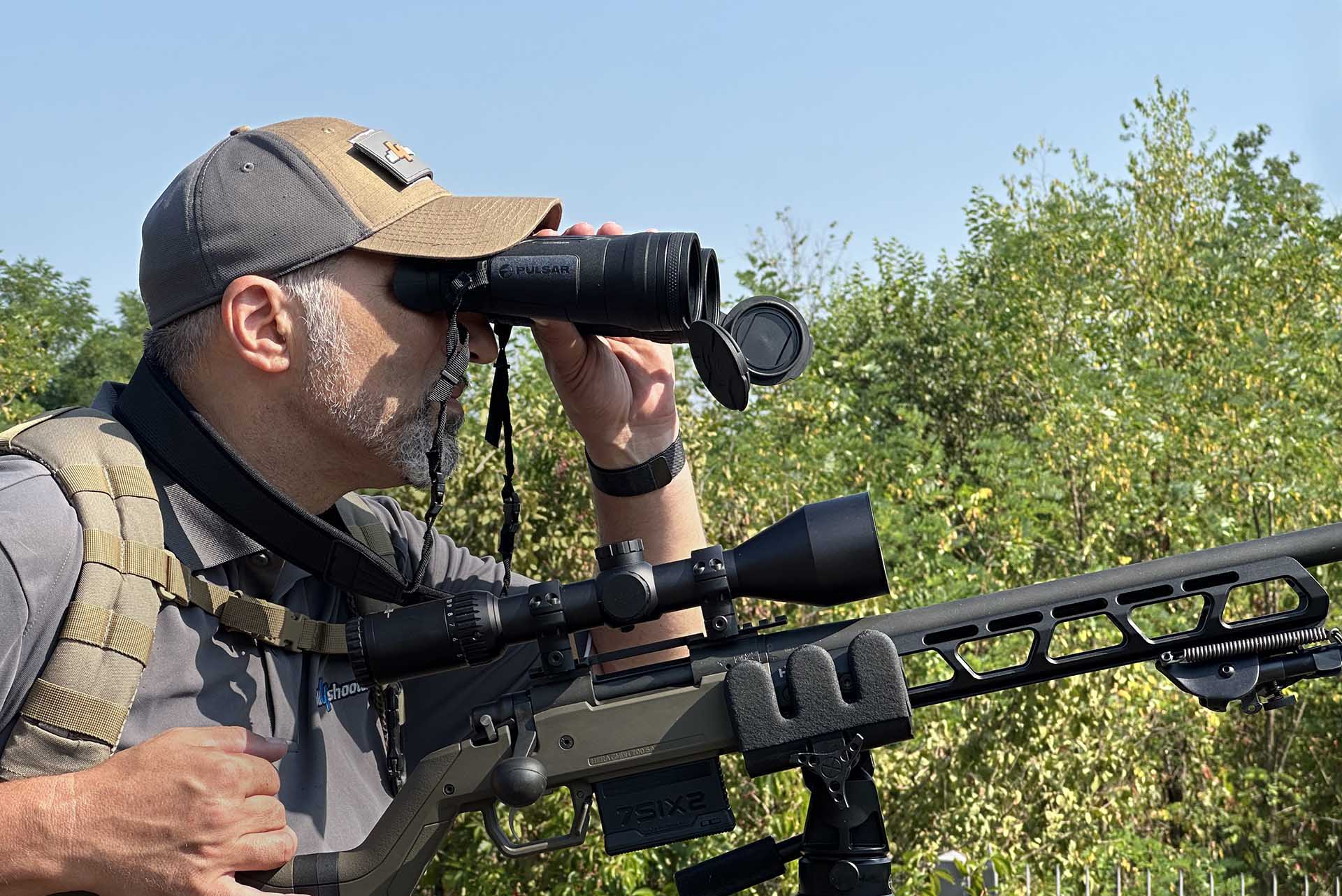The Pulsar Telos line of monoculars – introduced at the 2023 edition of the IWA in Germany – is the heir to the very successful and flexible series of flagship handheld Helion 2 Thermal Imaging optics for hunting, sports and professional uses built by the European manufacturer. However, the Telos monocular is deeply different. The device is a completely new design, very streamlined and featuring an attention to detail that can be found only in flagship optical products such as high-end professional cameras – and it’s not a coincidence that Pulsar studied the intuitive ergonomics of these photo/video equipment, as some handling and operational modes are the same. Such as the zoom ring, that works exactly as in a camera lens, being rotated to magnify, or reduce the observed object.
The new Telos thermal imaging monocular in detail
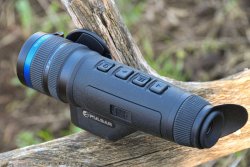
I received a sample of the Telos XP50 LRF model, identical to the basic version except that it includes a built-in laser range finder. Additional models are slated to be announced soon. The outward design of the housing is reminiscent of a very well-known European sports and hunting optics manufacturer, sleek and elegant, with a note of blue (the company’s trademark color) on the objective bell.
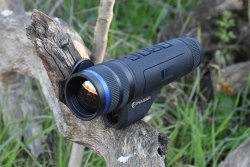
The Telos housing is built out of a composite polymer that is fully rubber armored, certified IPХ7 (fully waterproof, 30minutes at a depth of 1 m) for toughness and operation in difficult environments; also the thermal imaging core is ruggedized for vibrations, impacts and an operating temperature range from -25 to +40 °C.
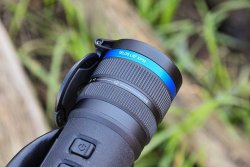
Controls include the usual four buttons on top of the housing, making the device perfectly ambidextrous; each button has a different tactile texture, and the menu driven user interface in the viewfinder is the same that Pulsar has standardized across its devices – extremely easy to use and the few additional functions are immediately found simply by scrolling down the menu items.
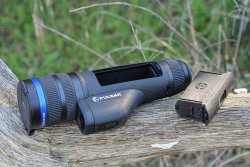
I mentioned the zoom ring, placed immediately behind the focus ring, has end stops and goes from a zoom factor of 1x to 4x in a quarter turn; native magnification is 2.5x therefore it goes up to a digital magnification of 10x. At the extreme 10x, the field of view has a definition of 64x48 pixels, that the image processing engine interpolates and smooths out, therefore still providing a useful image.
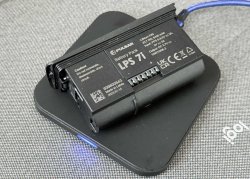
The LPS71 proprietary battery provides 3.7V and has a capacity of 6.4Ah, sufficient to power the Telos for up to 8.5 hours and can be easily replaced in seconds should the need arise. The battery can also be wirelessly charged on a standard mobile charging mat. A tiny LED next to the microphone gives the user the status of the device, when on, without having to peek in the eyepiece; a second LED in the rubber protected USB C connector bay informs on the battery recharging progress.
The eyepiece focusing ring is of the fast type and provides easy adjustment for super sharp observation of the HD full color microdisplay with 1024x768 resolution. The display is a high performance and power saving AMOLED with fast response times and improved color rendition.
The objective is a very fast F50 / 1.0 Germanium lens, fully coated for protection and performance.
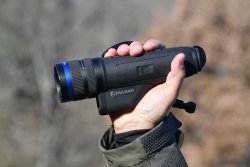
The built-in Wi-Fi offers dual waveband support, 2.4 / 5 GHz, improving data transfers, stability and responsiveness with the Stream Vision 2 mobile app for iOS and Android. The built in A/V recorder has a storage space of 64GB. On the firmware and image processing side of things, the Telos offers Pulsar’s Image Boost technology: it dramatically improves the rendition of the observed scene, with a controlled sharpening and increase of contrast of the image, without losing greyscale smoothness, which is also translated into improved color richness using one of the 8 available color palettes.
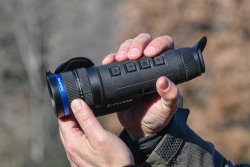
I left the actual sensor and laser rangefinder specs last… because they are indeed upgradeable in the Pulsar Telos. Although at this time a single model is available, as technology progresses, the investment that the user has placed in the Telos will pay back as new and more advanced sensors and microdisplay options become available, allowing for dramatic performance improvements at the cost of an upgrade, rather than a completely new product; different objective lenses, and the laser range finding module can be easily added to the basic model or replaced to add optional optical channels, to make the Telos a multispectral device.

The Telos XP50 LRF I received is based on a Lynred manufactured 640x480 uncooled microbolometer FPA with 17 µm pixel pitch featuring a cutting edge <18 mK NETD value, yielding amazing dynamic range and environmental detail in extremely low thermal contrast situations – very cold winter days, rain or fog, the worst weather conditions for a thermal camera. This is a NETD value only commonly found in high end military, medical and civil engineering thermal imagers, costing multiple tens of thousands of Euros – it’s the best I’ve seen advertised on a commercial hunting and sporting product! I have no doubt in the claimed 1800m detection distance with this level of sensitivity. The laser rangefinder module has a measuring capability of 1000 m, with the usual accuracy of +/- 1m, and offers various modes including continuous scan.
Using the Pulsar Telos XP50 LRF
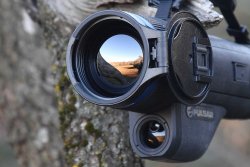
The Telos falls well in the hand, and although it is by no means small or light, it does feel lighter than the 720 g it weighs with battery; the build quality is top notch, and the Telos transmits an impression of toughness and reliability before even turning it on. And the speed at which it does turn on is also remarkable; less than 4 seconds from the press of the power button. The hand strap is comfortable and the greatest thing about it is that the strap attachments are actually rotating rings on the body of the device, so the whole strap can be easily rotated to each side to make the unit totally ambidextrous. It even has preset locking at various angles. Great design solution!
The objective of the Telos is very intuitive in its use, both for the silky smooth focusing, and the somewhat “grainier” zoom ring, which is actually a digital control; minimum focus distance is about four meters. The objective lens cover is bayonet mounted and easily removed to switch the opening side of the cap.
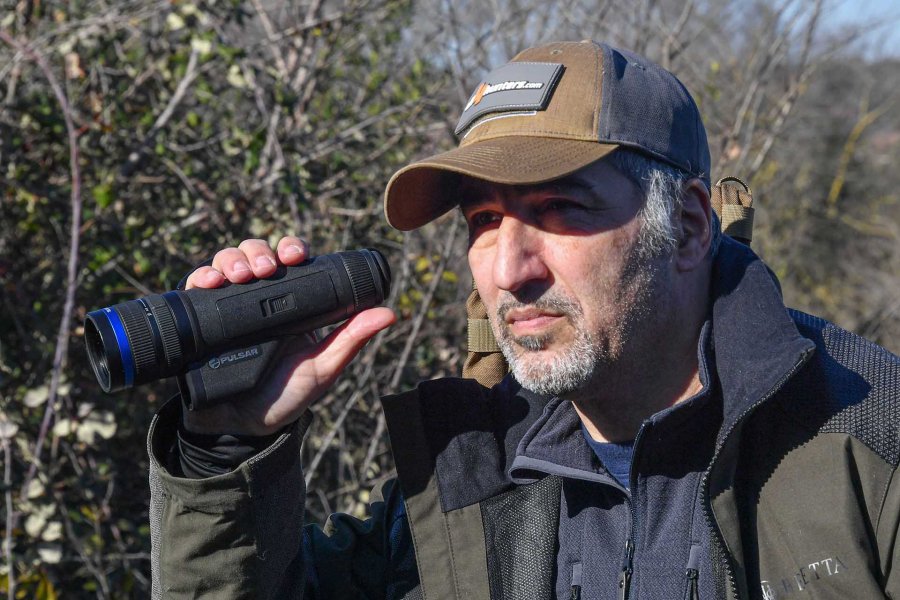
The LRF module placement means that you can’t measure the distance and comfortably keep your hand on the focusing or zoom ring at the same time… otherwise the hand covers the laser window. As for performance, the LRF is pretty much the same across all Pulsar products: quite good.
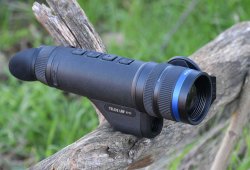
Although not the highest resolution I’ve seen from Pulsar – I’m also testing the incredible Thermion 2 LRF XL50 riflescope with a 1024x768 sensor – in my opinion the image quality of the Telos is the best in the lineup, due to the incredibly low NETD value of the sensor, also helped by the speed of the Germanium lens that features a 1.0 aperture; remember, NETD stands for Noise Equivalent Temperature Difference and represents the capacity of the sensor to detect a temperature difference, that is closely correlated to the noise of the sensor.
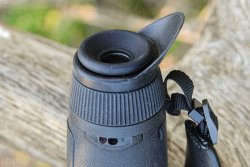
A NETD of better than 18 milliKelvin means the device can “see” a gradient of 56 grey shades in the span of a single degree of temperature. The crispness, detail, dynamic range and sharpness of the images observed through the eyepiece of the Telos is amazing. At 2.5x I get the highest resolution, as all the pixels from the sensor are represented in the eyepiece; and the quality is staggering. Single hairs of a close enough animal are individually discernible.
The Telos literally shines in difficult weather conditions. With heavy fog, or in a downpour, the image is better than any other device I tested. Apart from it’s main purpose, that of a hunting optic, I also believe the Telos to be a quite capable all round thermal imager for professional work.
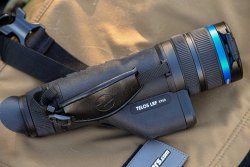
A tripod adapter (that snaps over the laser range finder module) is available separately; additional batteries are also available.
MSRP for the Pulsar Telos XP50 LRF is set for European customers at a premium price point, 3,690 euro (small differences can be due to the different VAT percentages of individual EU states); indeed, the price tag is higher than average, however this is no average product.
The performance levels shown places it, IMHO, as the new reference standard against which thermal optics will be compared to, not to mention some features are basically unique to this device, such as the <18 mK NETD value and complete upgradeability.
In this regard, it is most probable that any available upgrades will have to be installed by the manufacturer.
For more information: https://www.pulsar-nv.com/glo/products/33/thermal-imaging-monoculars/telos-xp/




